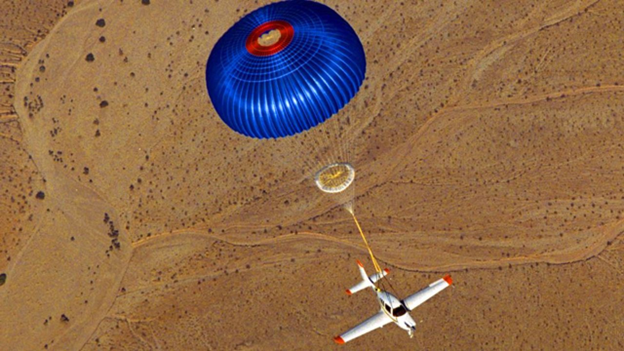- WikiMiles Analyzer
-
Frequent Flyers Programs
- Aer Lingus AerClub
- AeroMexico Club Premier
- Aeroplan
- Air New Zealand AirPoints
- Alaska Mileage Plan
- American AAdvantage
- ANA Mileage Club
- Asiana Club
- Avianca Lifemiles
- British Airways Executive Club
- Cathay Pacific Asia Miles
- Copa ConnectMiles
- Delta Skymiles
- El Al Matmid Club
- Emirates Skywards
- Etihad Guest
- Eva Air Infinity Mileagelands
- Finnair Plus
- Flying Blue
- HawaiianMiles
-
Airlines
- Aer Lingus
- Aeroflot
- Aerolineas Argentinas
- AeroMexico
- Air Astana
- Air Canada
- Air China
- Air Europa
- Air France
- Air India
- Air Malta
- Air New Zealand
- Air Tahiti Nui
- Airlink
- Alaska Airlines
- All Nippon Airways
- American Airlines
- Asiana Airlines
- Austrian Airlines
- Avianca
- Bangkok Airways
- British Airways
- Brussels Airlines
- Cathay Pacific
- China Airlines
- China Eastern
- China Southern
- Copa Airlines
- Croatia Airlines
- Czech Airlines
- Delta
- EgyptAir
- EL AL
- Emirates
- Ethiopian Airlines
- Etihad Airways
- Eva Air
- Fiji Airways
- Finnair
- Garuda Indonesia
- GOL
- Hawaiian Airlines
- Iberia
- IcelandAir
- Japan Airlines
High Altitude, Higher Risks: The Truth About Parachutes on Planes

Imagine yourself standing at the edge of an abyss…
Your mind races, heart pounds, and all of a sudden, you’re aware of how thin the line is between soaring and plummeting.
That gut-wrenching moment—when gravity’s pull becomes undeniably real—is precisely where our story begins.
The Parachute Paradox: A Flighty Fantasy

Photo from BBC
In a world where technology solves nearly everything, it’s easy to ask:
“Why don’t commercial planes give every passenger a parachute?”
The notion seems almost instinctive—until you examine the science and logistics of it.
Let’s talk about the fatal flaws of freefall:
-
Altitude & Oxygen: The Silent Assassin
Commercial jets cruise above 30,000 feet—altitudes where the air thins so severely that skydivers already require oxygen and extensive training just to function safely.
At such heights, hypoxia, extreme cold (often around –65 °F), and rapid lung expansion can incapacitate or kill in an instant.
-
Speed: The Invisible Menace
At cruising speeds of 450–600 mph, any attempt to open a door or step into the breach becomes deadly.
The sheer force of the airflow alone makes parachute deployment both impractical and potentially fatal.
-
Chaos in Cabin Aisles
Even ignoring physiological hazards, consider the pandemonium: Dozens—or hundreds—of untrained civilians trying to don parachutes and leap in cramped aisles.
The chaos and delay alone could doom the operation!
-
Weight, Cost, and Structural Tug-of-War
Each parachute weighs 15–40 pounds. Multiply that by hundreds of passengers—and account for helmets, oxygen gear, altimeters—and you’re looking at MASSIVE extra weight, higher fuel consumption, and significant design overhauls!
-
When Would It Even Matter?
Statistics show most fatal aviation incidents occur during takeoff or landing—phases too close to the ground for parachutes to help.
In short, parachutes on commercial aircraft aren’t just impractical; they’d also make flying more dangerous rather than safer.
There is a notable exception, though: Light aircraft.
Planes such as the Cirrus SR-series come with integrated, whole-plane ballistic parachute systems.
When properly deployed, these have saved lives—demonstrating that parachutes can work—but only in smaller, slower aircraft where variables are controlled.
Engineering Insight: The Cost of Safety
An Airbus spokesperson once commented that any parachute system “would have to be very large… complex, bulky, and heavy—and require multiple safety devices” to prevent accidental deployment.
A more technical breakdown estimates that parachutes for a medium jet (like an A-320) would add around 2,500 kg—equivalent to about 16% of its zero-fuel weight.
That’s not just extra weight—you’d need more flights, more fuel, and more runway time for the same passenger load!
On social media forums like Reddit, users echo the logic:
“A parachute wouldn’t give them any control… even if all engines fail, the plane still glides.”
“The tyranny of the parachute equation: You need a parachute to slow the plane… but the parachute has mass…”
Simply put, parachutes offer false promises of control in a system where gliding, planning, and redundancy already do the job far more effectively.
—
To sum it all up, airlines invest heavily in preventative systems—redundant engineering, strict maintenance, and continuous pilot training.
At present, emergency protocols, sturdy design, and controlled emergency landings still remain the most practical safeguards in air travel.
Sure, parachutes may seem dramatic… but in the sky, they’re often the riskiest gear you could carry.
Choose where you are going from and to by selecting the respective zones. There are two ways to choose your origin and destination - you can either select the zones they fall into on the map or by clicking on the bars above the map and entering the city name or airport code into the search fields.
- Choose one of the three point combination options which is applicable to you. If you don't have any miles in any airline accounts you can leave those fields blank.
- Input all of the different points you have on the credit cards you are planning to use. You can enter as many as you like. If you have multiple cards on one name from the same bank you can combine and enter the total amount of points between all of your cards.
- Enter all the miles you have in airlines frequent flyer programs on the left hand side following the airlines name.
- Once you input the information, click on the analyze button at the bottom of the page.
- The analyzer will offer you the optimal transfer combinations to explore as well as pros and cons of each.
- Review analyzer recommendations. Total number of miles is not the only consideration you should take into account. Analyzer will give you additional information about each program to make the right decision. You can also download results to a pdf and even send them to others if you like.
- Proceed to check availability with respective airlines. Do not transfer any miles until you confirm the desired option is available on the airline’s website. Note the transfer time and hold the reservation if possible before transferring any miles.
- Remember all transfers are final as you would not be able to send the points back to your credit card. If your trip is cancelled your miles will go back to the respective airline account.
- Transferring points to airline's frequent flyer programs is not the only way to obtain the award ticket. You can also redeem the points through your credit card directly by using the Book Travel option. You can find out more by checking out our Credit card reward tab on Wikimiles home page.
- WikiMiles Crew is always here to answer any questions. For an additional fee we can also assist you with the bookings. Use the Contact us section to reach out to us.
Please enter your email to download this chart!
Note! Your email might be added to future newsletter!
Thank you!


